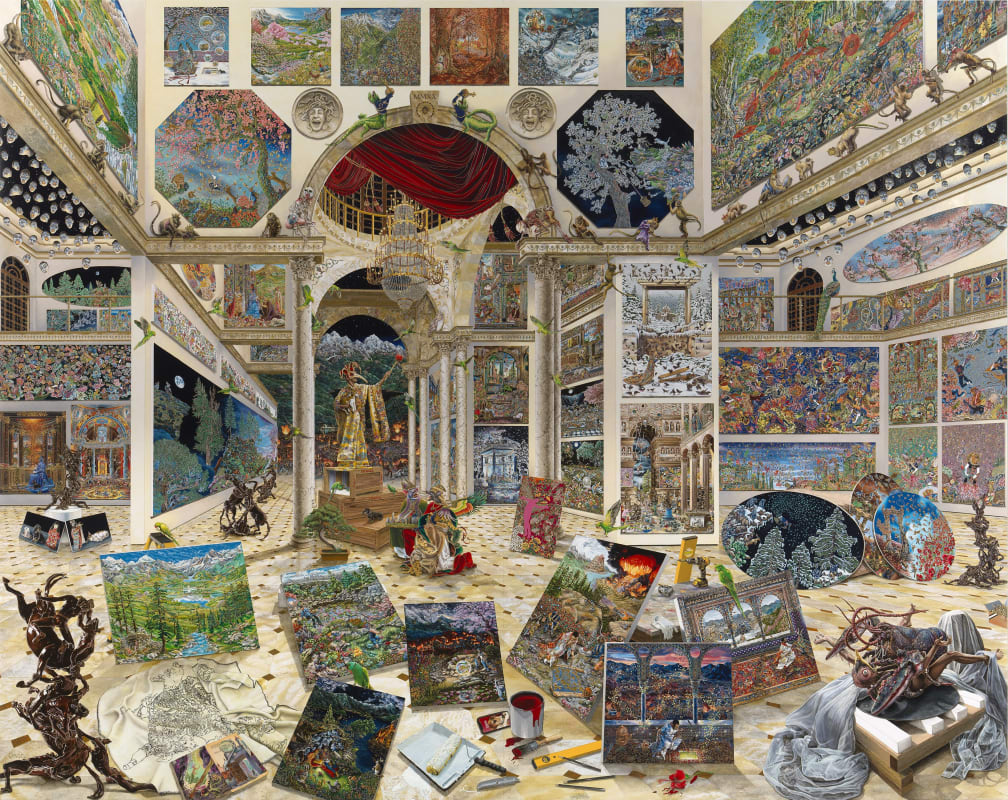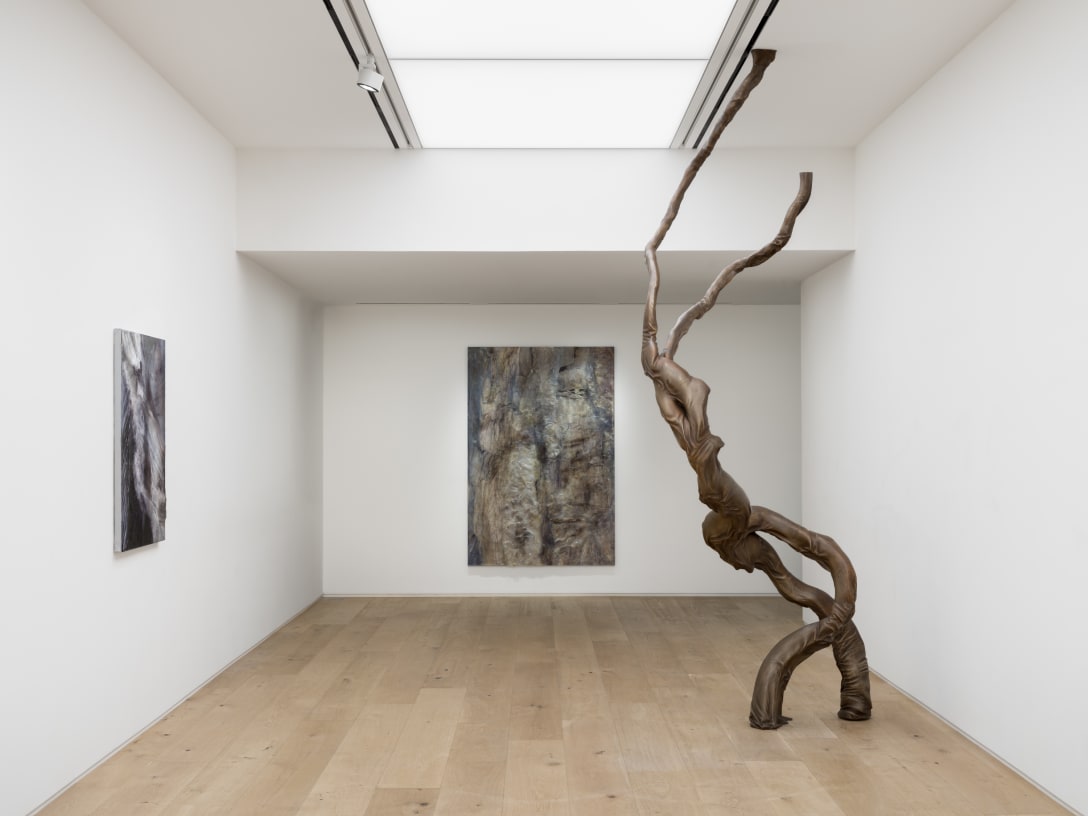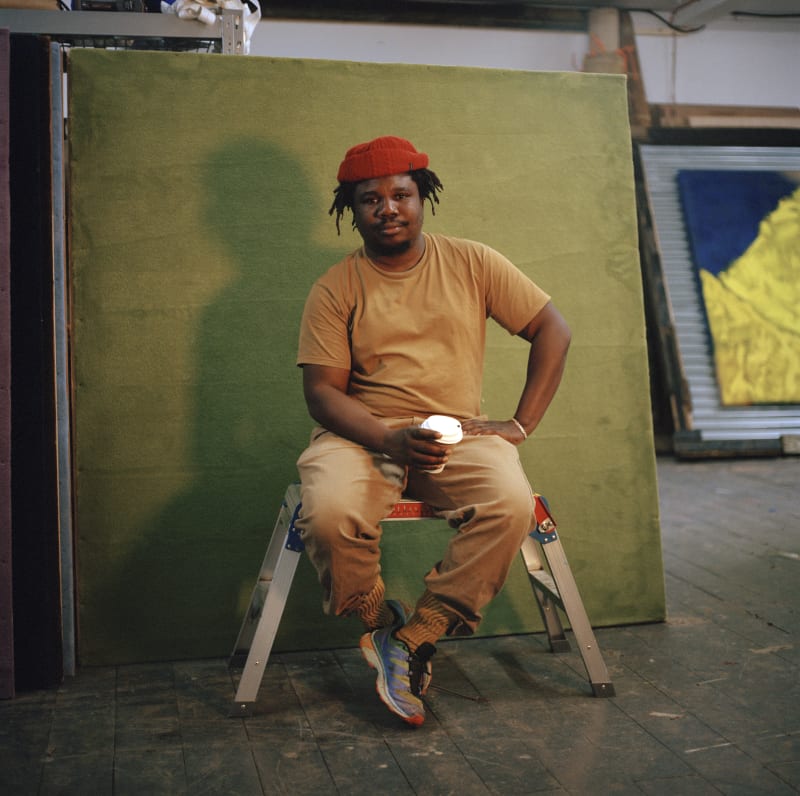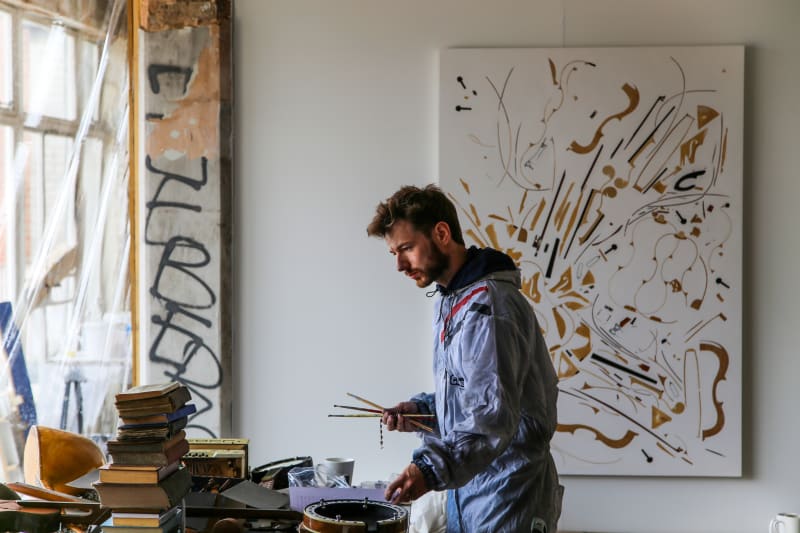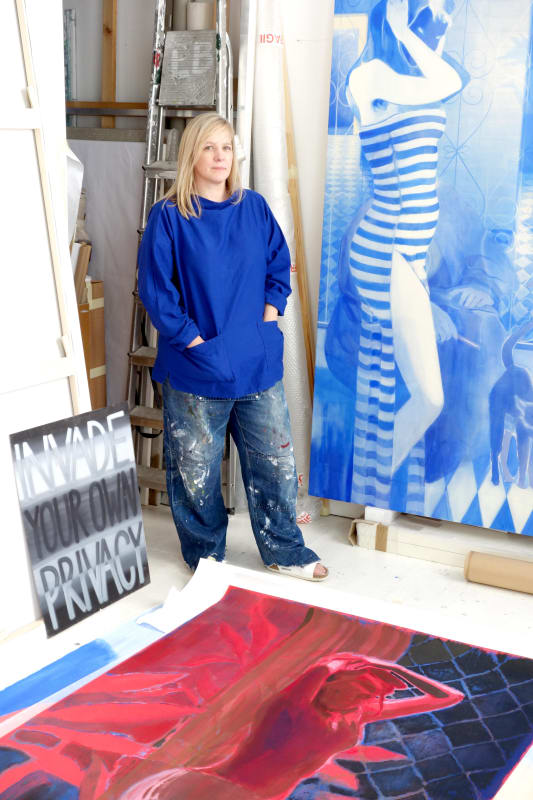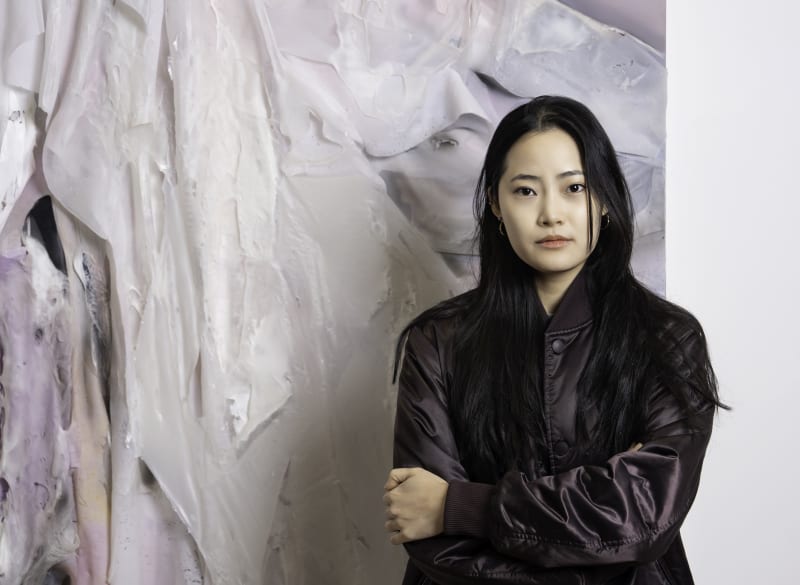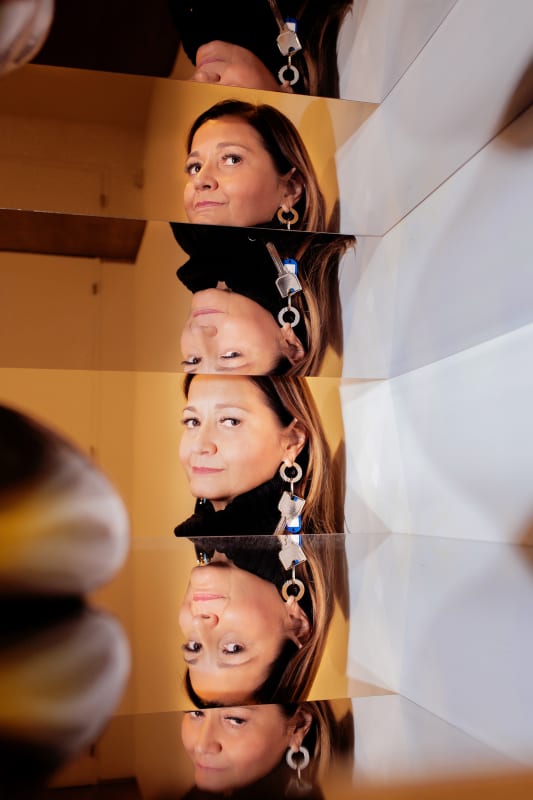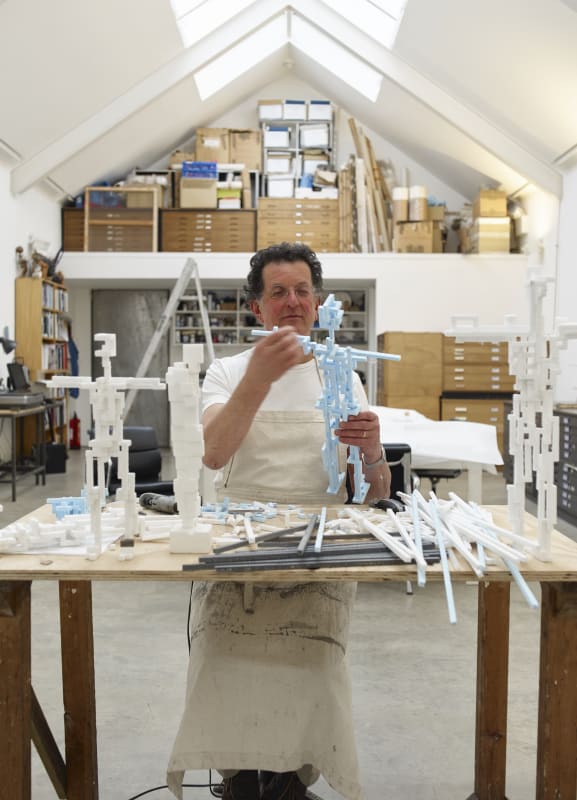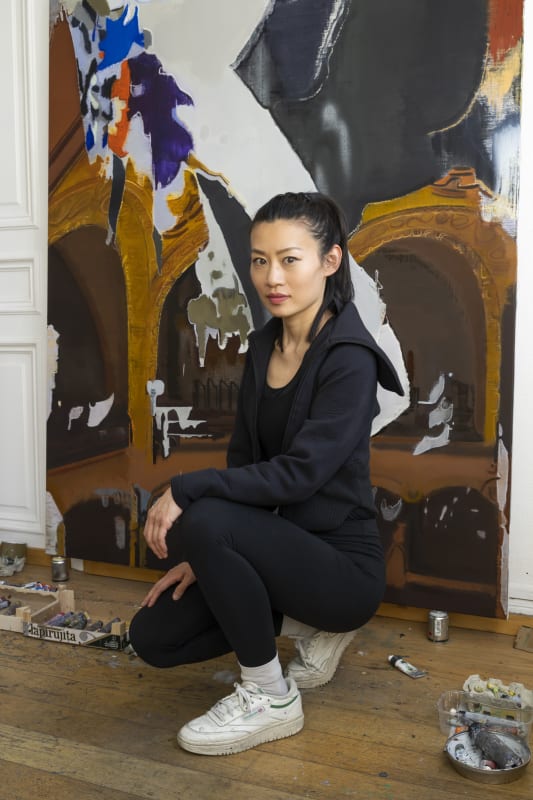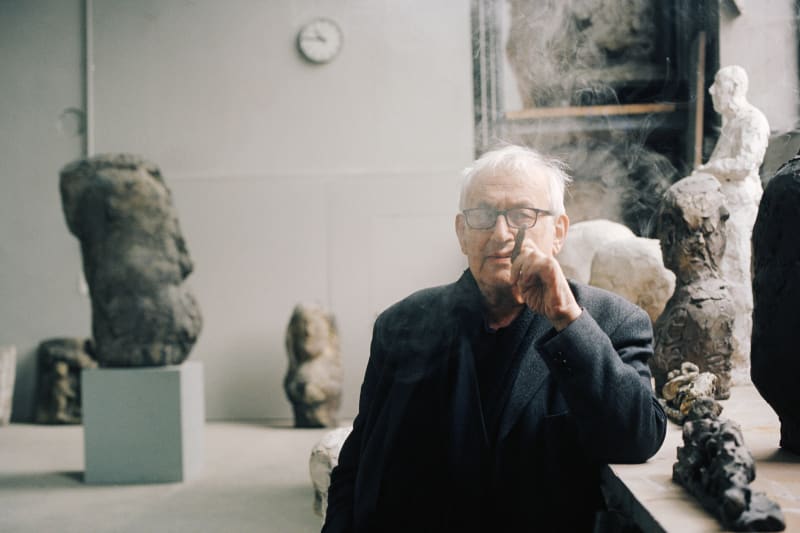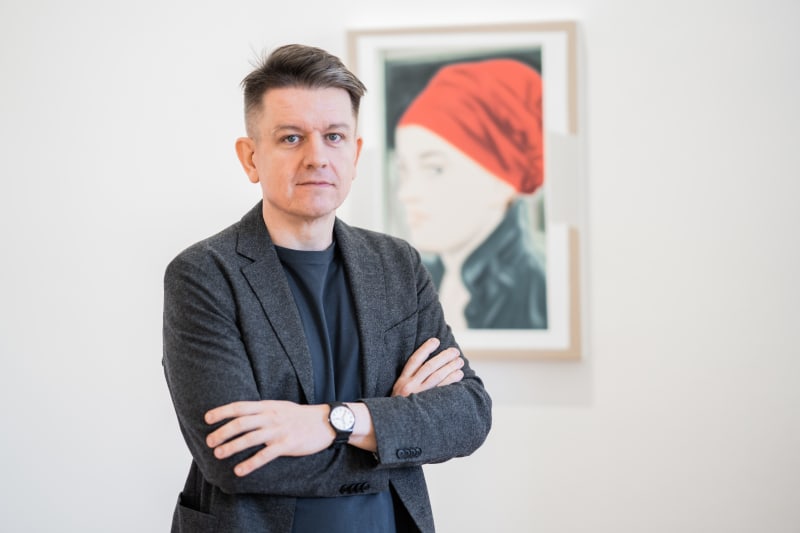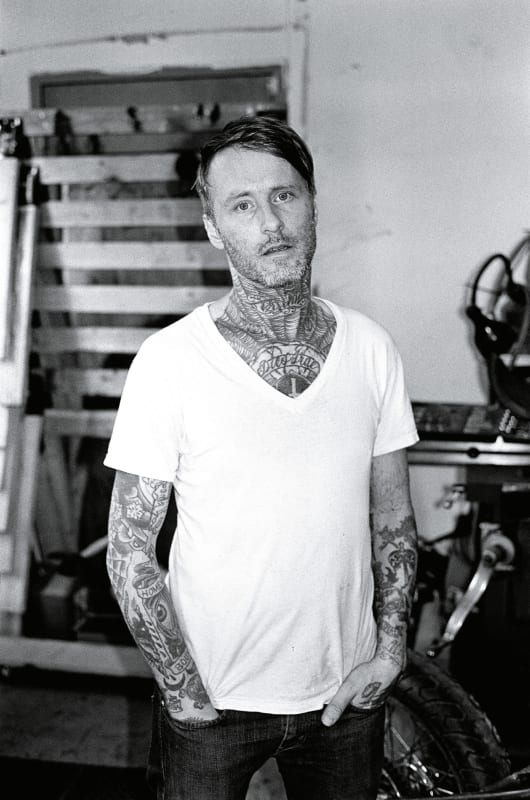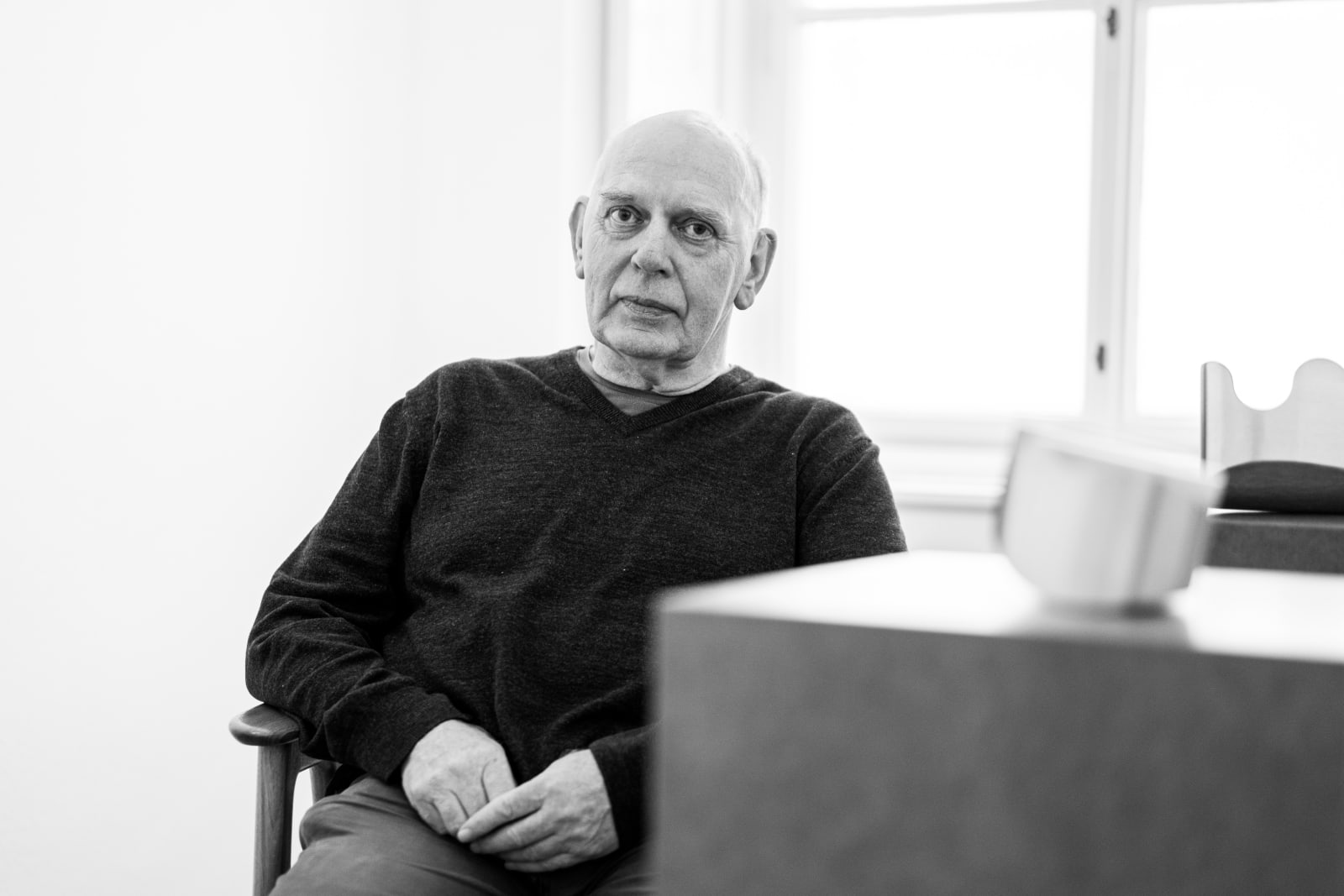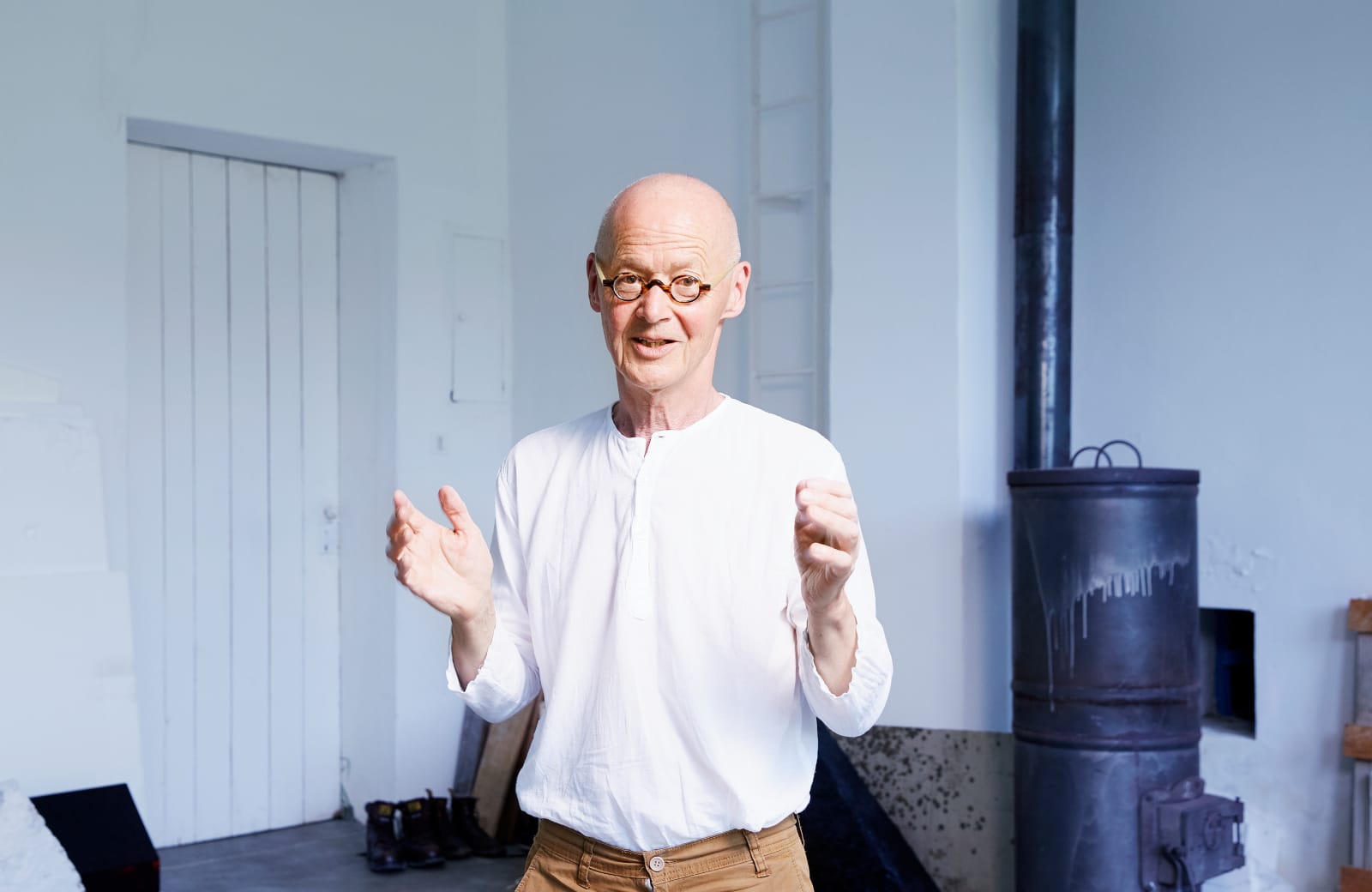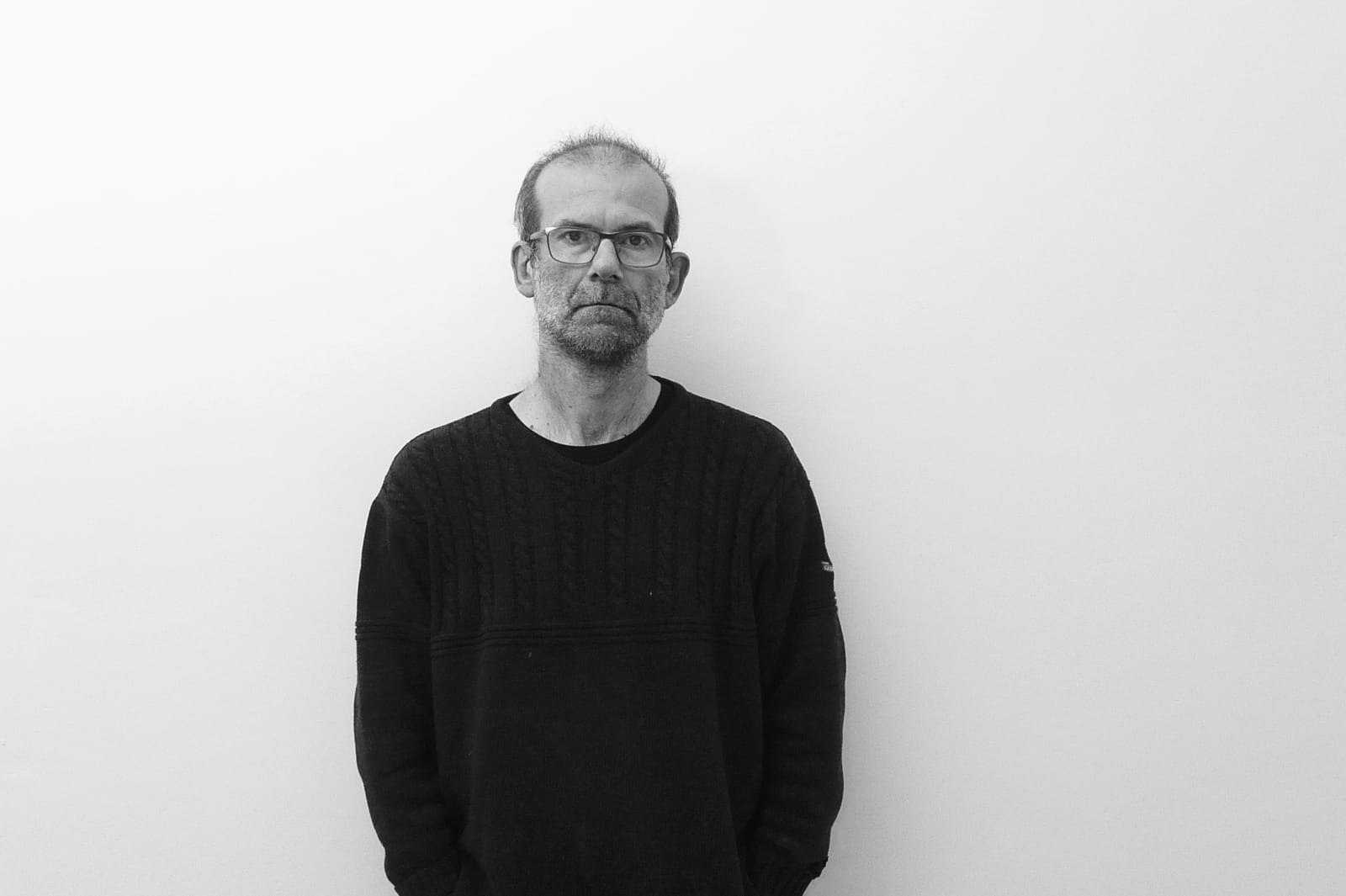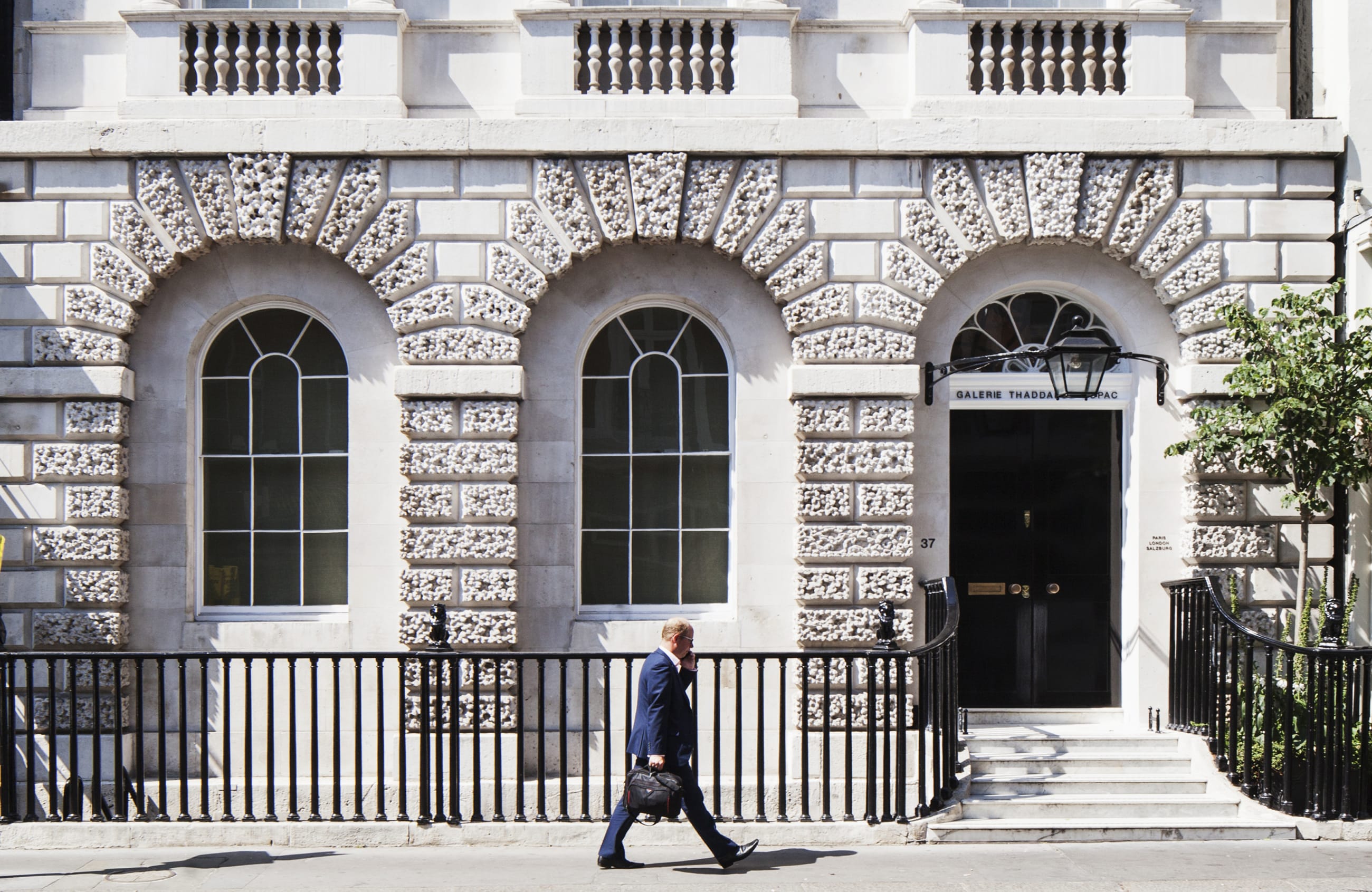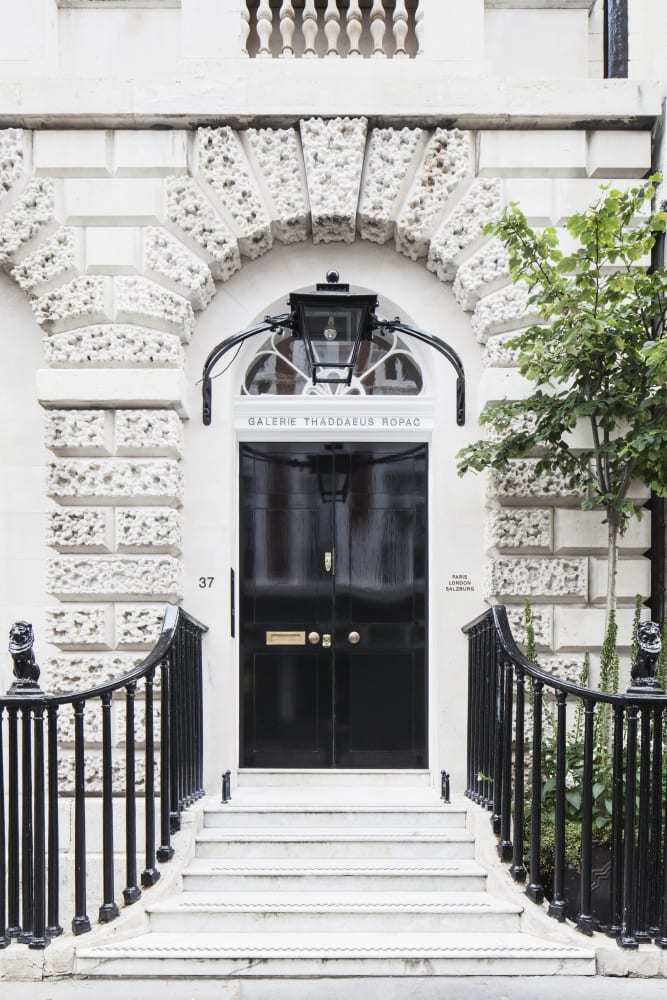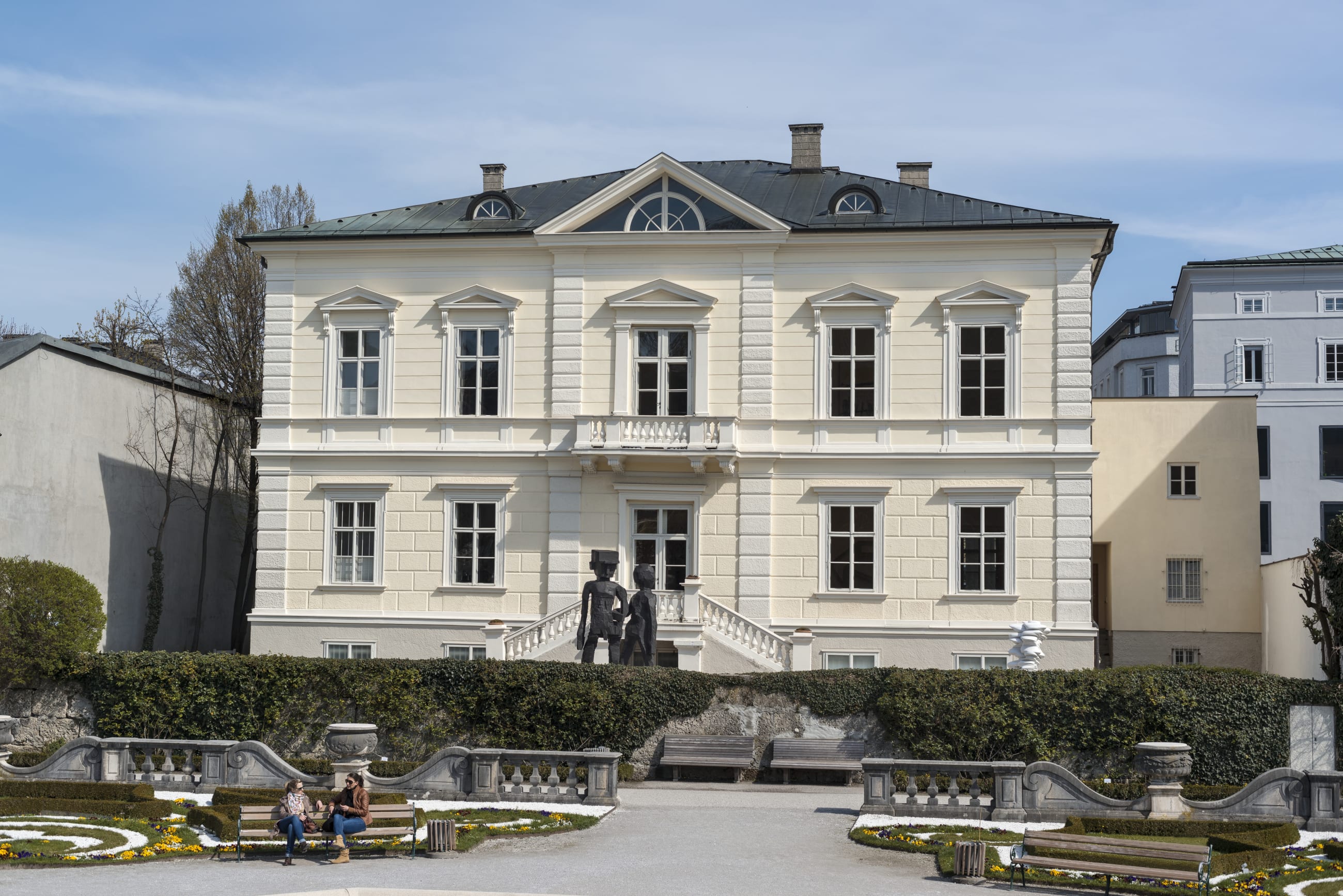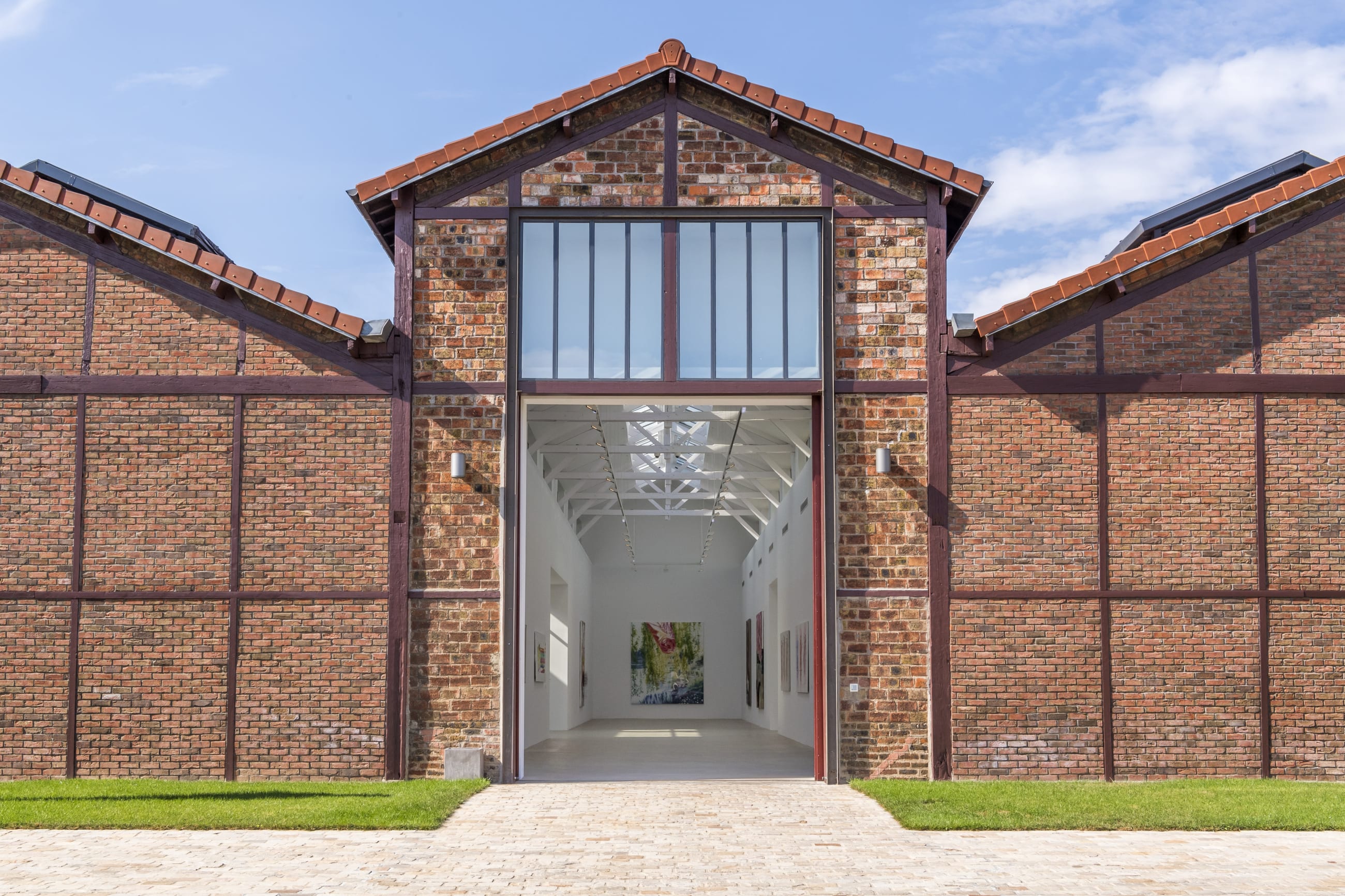Raqib Shaw Review at Huntington Art Gallery
By Suzanne Hudson
Following stops at the Frist Art Museum in Nashville, the Isabella Stewart Gardner Museum in Boston, and the Museum of Fine Arts, Houston, “Raqib Shaw: Ballads of East and West” has landed in Los Angeles as the London-based artist’s much-hyped first solo museum exhibition on the West Coast. While the core of the survey curated by Zehra Jumabhoy remained consistent across the tour, Shaw has added two new contributions for the Huntington: a pair of large tapestries installed above the central staircase of the Beaux Arts mansion—once the lavish winter residence of Henry and Arabella Huntington—that now houses the institution’s collection of British and European art. The works inject a rather less untroubled scene than the idyllic landscapes, mannered backdrops for gentry or pastoral fantasies found elsewhere in the building. Like so much of Shaw’s citational art, these new textiles reference historical painting (Pieter Bruegel the Elder’s Tower of Babel, ca. 1563, and John Martin’s Destruction of Pompeii and Herculaneum, 1822), but also earlier works from Shaw’s series “Space Between Dreams,” 2022–23. Here, Shaw’s visions of erupting flames and melting ice introduce plausible alternatives of the world’s end into the Huntington’s cloistered sanctuaries of gentility.
These tapestries suggest a none-too-subtle ecological read (especially when paired, as the exhibition is, with another current show at the Huntington dealing with industrialization and the global economy, “Storm Cloud: Picturing the Origins of Our Climate Crisis”). If also fraught with registrations of vulnerability, the bulk of Shaw’s earlier contributions do not necessarily thematize environmental cause or catastrophe; when they do introduce such motifs, it is often at the margins, as in That Night in Xanadu, 2019–21, in which rabbits holding pocket watches stand sentinel at the painting’s lower corners. On a balcony precipice framed by court architecture, a man wearing a kimono dangles a golden birdcage, releasing green parakeets. Here, Shaw imagines the Mongol ruler’s summer palace and its impossibly luxuriant Himalayan surrounds through his memories of a lost childhood in Kashmir, India. As the Kipling-derived title of the show broadly suggests, Shaw operates in a plaintive key. Autobiographically inflected paintings figure the artist’s surrogates as a joker, a saint, and a Hindu deity, among other forms, and offer reckonings with migratory displacement, political violence, and loss. Even The Departure (After Tintoretto), 2021–22, a painting centered on a gilded staircase atop which a seated dog pulsing with light gazes still upward, commemorates Shaw’s dead terrier.
Such manifest content is characteristically belied by visual and material lushness, the product of Shaw’s method of applying enamel paint to wood panels using porcupine quills. Installed in a deep-teal gallery, the encrusted surfaces of the artist’s seven oversize paintings line the walls without much space between. The physical experience is one of satiety, occasioned by the admiration of a single work filled with so many intricate and information-dense areas of competing focus within a circumscribed area. The epic The Retrospective 2002–22, 2015–22, is a showstopper (literally so, as it was impossible to pass around those clustered around it in the narrow room). Modeled on Giovanni Paolo Panini’s virtuosic chockablock Picture Gallery with Views of Modern Rome, 1757, it depicts some sixty of Shaw’s earlier paintings re-created within the picture. So intricate is the composition that a giant label nearby diagrams the dozens of components, becoming a kind of work in itself. Amid the painted inventory, Shaw’s alter-ego appears in the frame dressed in a Venetian carnival mask, standing on a makeshift pedestal (an empty crate emblazoned with the word FRAGILE); he holds forth as a conductor, waving a toilet plunger as a baton. Mountains loom in the distance and, in an acknowledgment of impotence despite mastery, fire closes in.
